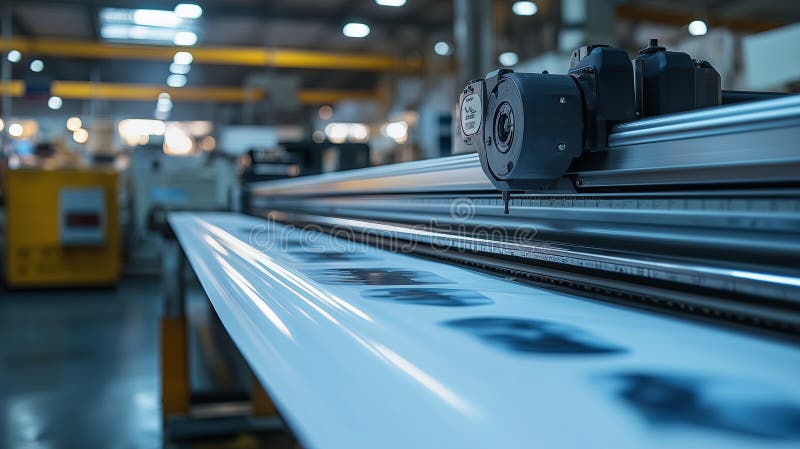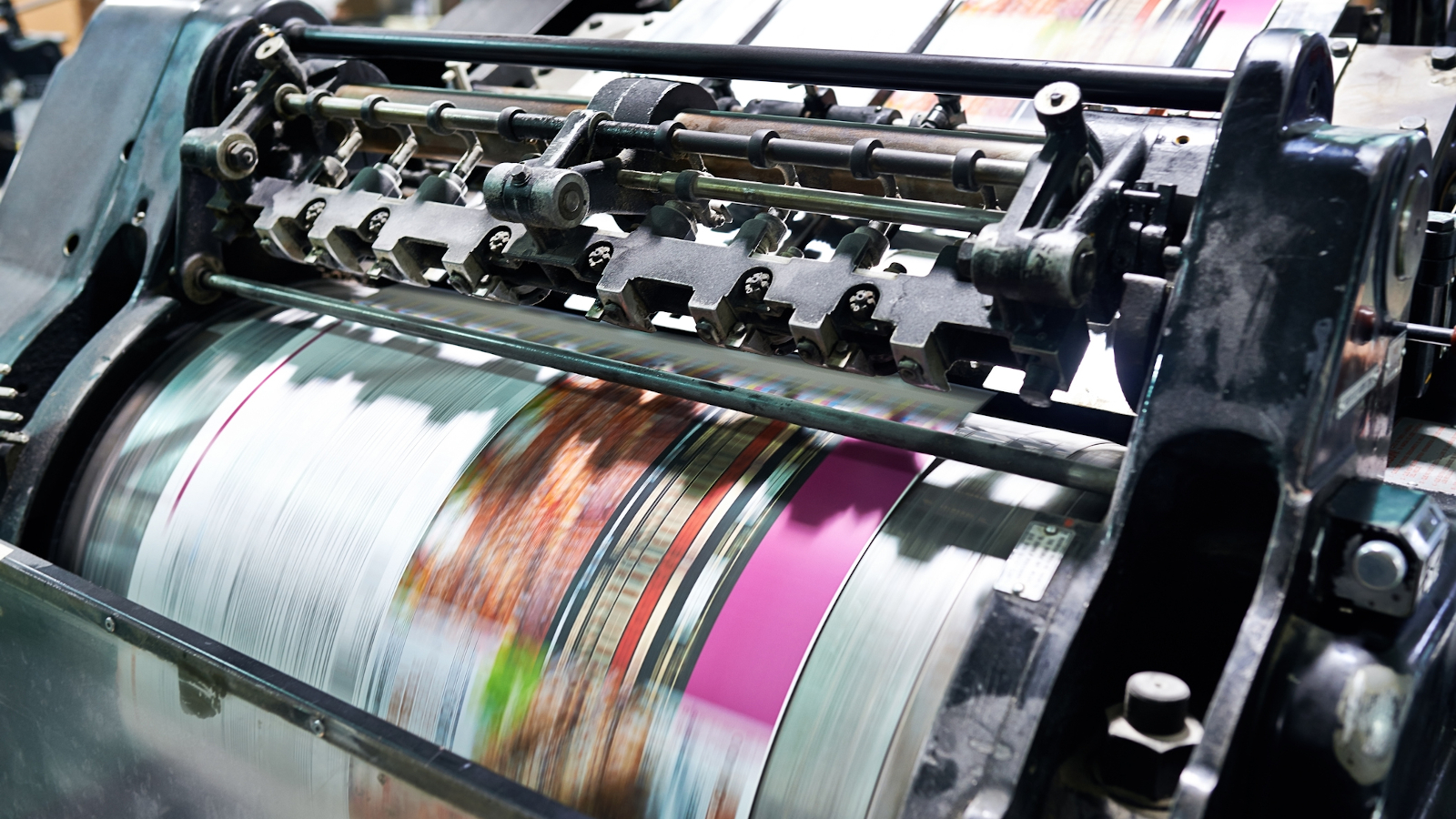The offset printing process step by step is a fascinating journey that transforms a simple idea into a beautiful printed product. For marketing professionals, understanding this process is crucial in making informed decisions about printing solutions. Let’s dive into the intricate steps of offset printing and discover why it remains a popular choice in the printing industry.

What is Offset Printing?
Offset printing, also known as offset lithography, is a method where an inked image is transferred from a plate to a rubber blanket and then onto the printing surface. This technique is widely used for producing high-quality prints in large volumes, making it a preferred choice for businesses and marketers alike.
Step 1: Preparing the Design
The first step in the offset printing process is preparing the design. This involves creating a digital file using design software. The design must be in high resolution, typically 300 dpi (dots per inch), to ensure clarity and detail in the final print.
Design Tips for Offset Printing
When preparing your design, keep in mind that offset printing can handle a wide range of colors and gradients. Utilize this to your advantage by incorporating vibrant colors and intricate designs.
Step 2: Creating the Plates
Once the design is ready, the next step is creating the plates. In offset printing, each color used in the design requires its own plate. These plates are usually made from aluminum and are coated with a photosensitive material.
Plate Making Process
The plate-making process involves exposing the coated plates to ultraviolet light, which hardens the photosensitive material in the shape of the design. The plates are then developed, leaving only the ink-receptive areas.
Step 3: Mounting the Plates
After the plates are created, they are mounted onto the printing press. The press used in offset printing is a complex piece of machinery capable of printing thousands of sheets per hour.
Setting Up the Press
Setting up the press involves adjusting the plates, ink rollers, and blankets to ensure precise registration and ink distribution. This step is crucial for maintaining the quality and consistency of the print.
Step 4: Inking the Plates
In this step, the ink is applied to the plates. The ink adheres only to the image areas, ensuring that only the desired parts of the design are printed.
Choosing the Right Ink
Choosing the right ink is essential for achieving the desired outcome. Consider factors such as color accuracy, drying time, and finish when selecting inks for your project.
Step 5: Transferring the Image
The inked image is transferred from the plate to a rubber blanket and then onto the printing surface. This indirect transfer method is what gives offset printing its name.
Benefits of Rubber Blanket Transfer
The use of a rubber blanket allows for a smoother, more even print, reducing the risk of image distortion and ensuring high-quality results.
Step 6: Drying the Prints
After the image is transferred, the prints need to dry. Depending on the ink and paper used, drying can take anywhere from a few hours to a day.
Ink Drying Systems
Modern presses often use advanced ink drying systems to speed up the process and improve efficiency. For more information on ink drying systems in flexography, click here.
Step 7: Finishing Touches
Once the prints are dry, they undergo finishing processes such as cutting, folding, and binding to prepare them for distribution.
Quality Control
Quality control is an essential part of the finishing process. Each print is inspected for defects, ensuring that only the best products reach the customer.
Advantages of Offset Printing
There are numerous advantages to using the offset printing process. It offers exceptional image quality, cost-effectiveness for large volumes, and flexibility in terms of design and color.
Why Choose Offset Printing?
For marketing professionals, offset printing provides a reliable and efficient way to produce high-quality materials. Whether you need brochures, flyers, or posters, offset printing delivers results that impress.
Challenges in Offset Printing
Despite its advantages, offset printing does come with challenges. These include setup time, cost for small runs, and potential for color variations between prints.
Overcoming Challenges
By understanding the potential challenges and working with experienced printers, you can overcome these obstacles and achieve outstanding results.
The Future of Offset Printing
As technology advances, offset printing continues to evolve. Innovations in plate-making, ink formulation, and press technology are paving the way for even higher quality and efficiency.
Staying Ahead
By staying informed about the latest trends and developments, marketing professionals can leverage offset printing to create impactful marketing materials.
Comparing Offset and Digital Printing
While offset printing is ideal for large volumes, digital printing offers benefits for short runs and personalized prints. Understanding the differences can help you choose the right method for your needs.
Choosing the Right Method
Consider factors such as cost, turnaround time, and print quality when deciding between offset and digital printing.
Conclusion
Understanding the offset printing process step by step empowers marketing professionals to make informed decisions about their printing needs. With its high quality, versatility, and cost-effectiveness, offset printing remains a valuable tool in the world of marketing.

FAQ Section
What is the main advantage of offset printing?
The main advantage of offset printing is its ability to produce high-quality prints at a low cost per unit, especially for large volumes.
How does offset printing differ from digital printing?
Offset printing uses plates and is ideal for large runs, while digital printing is more suited for short runs and personalized prints.
What materials can be printed using offset printing?
Offset printing can be used on a variety of materials, including paper, cardboard, and plastic, making it versatile for different projects.
For more details on offset printing, you can visit Ordant’s guide on offset printing.
This article contains affiliate links. We may earn a commission at no extra cost to you.






